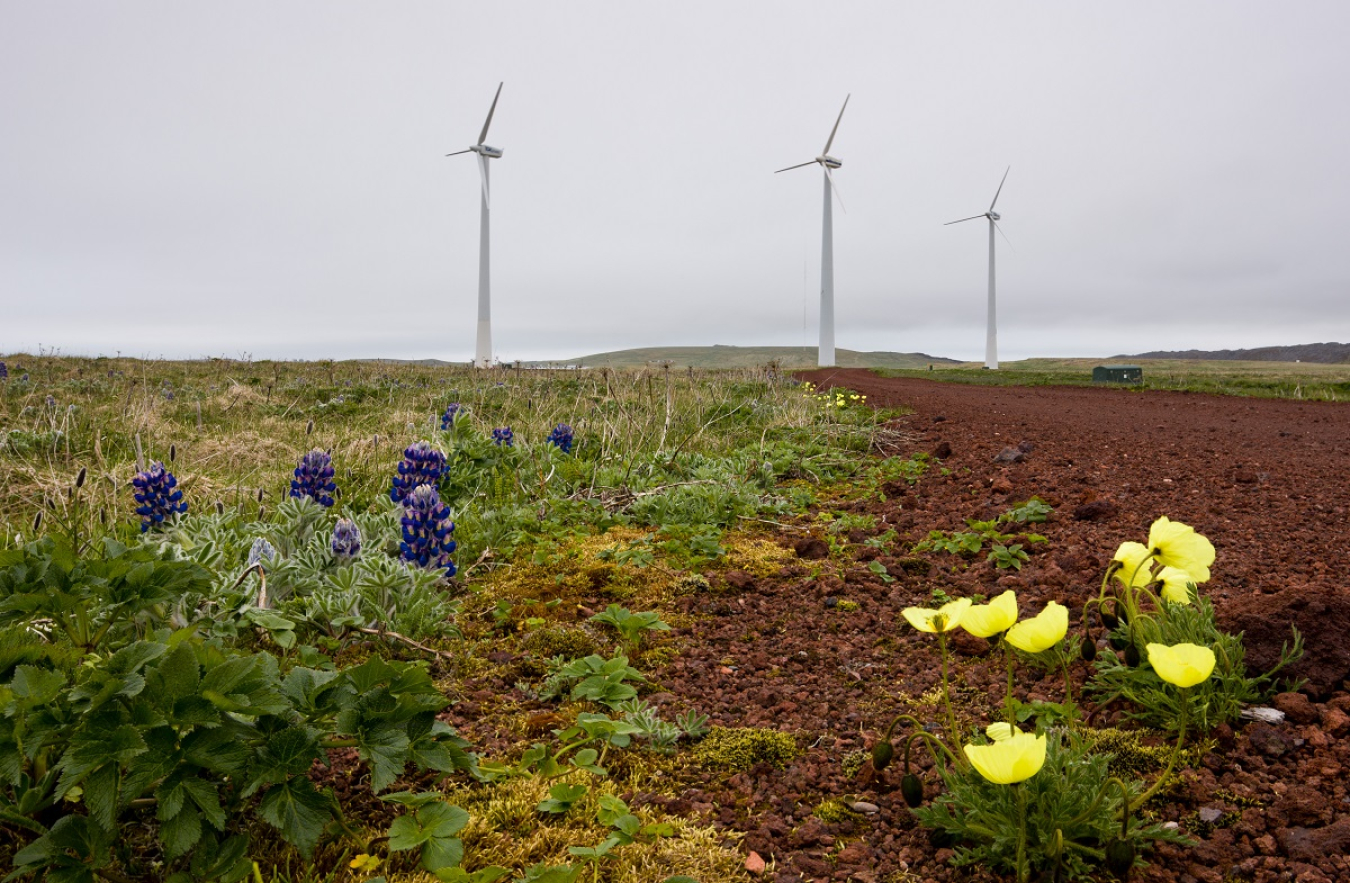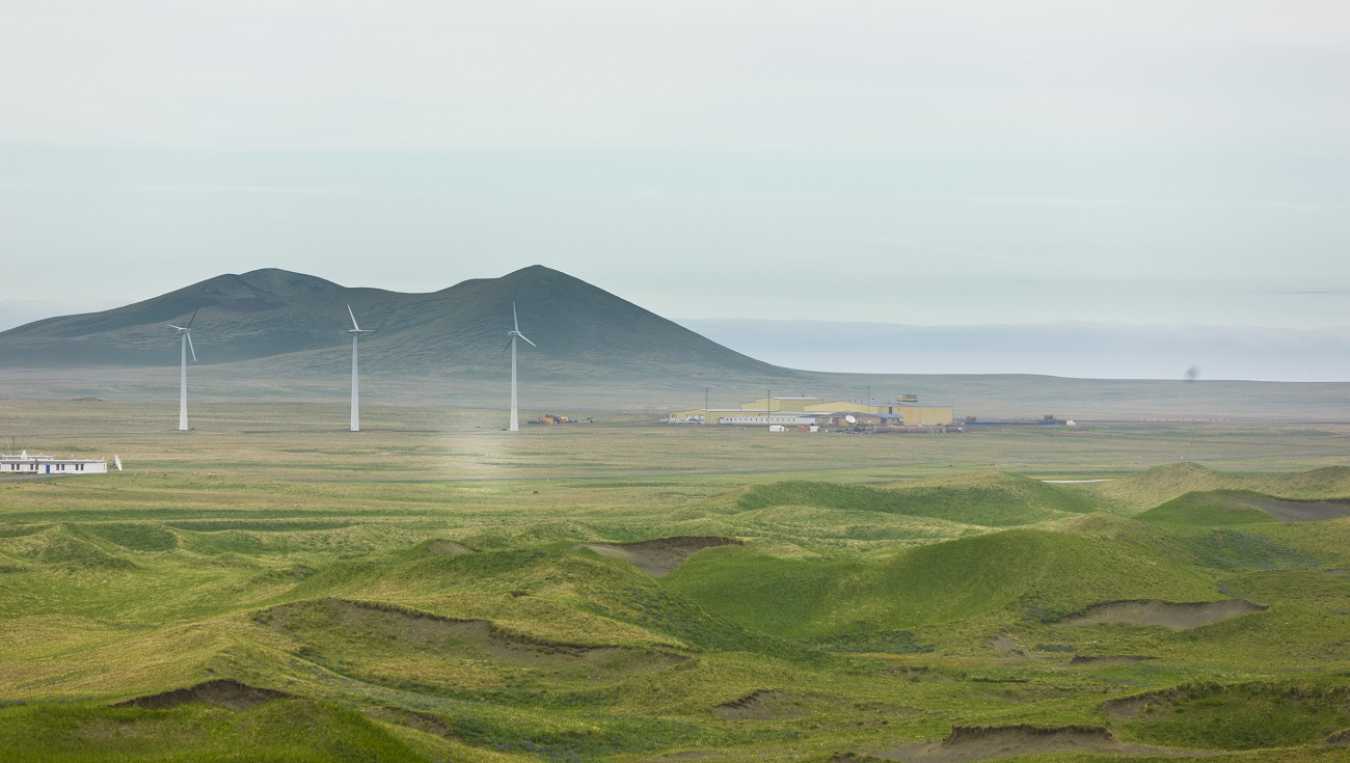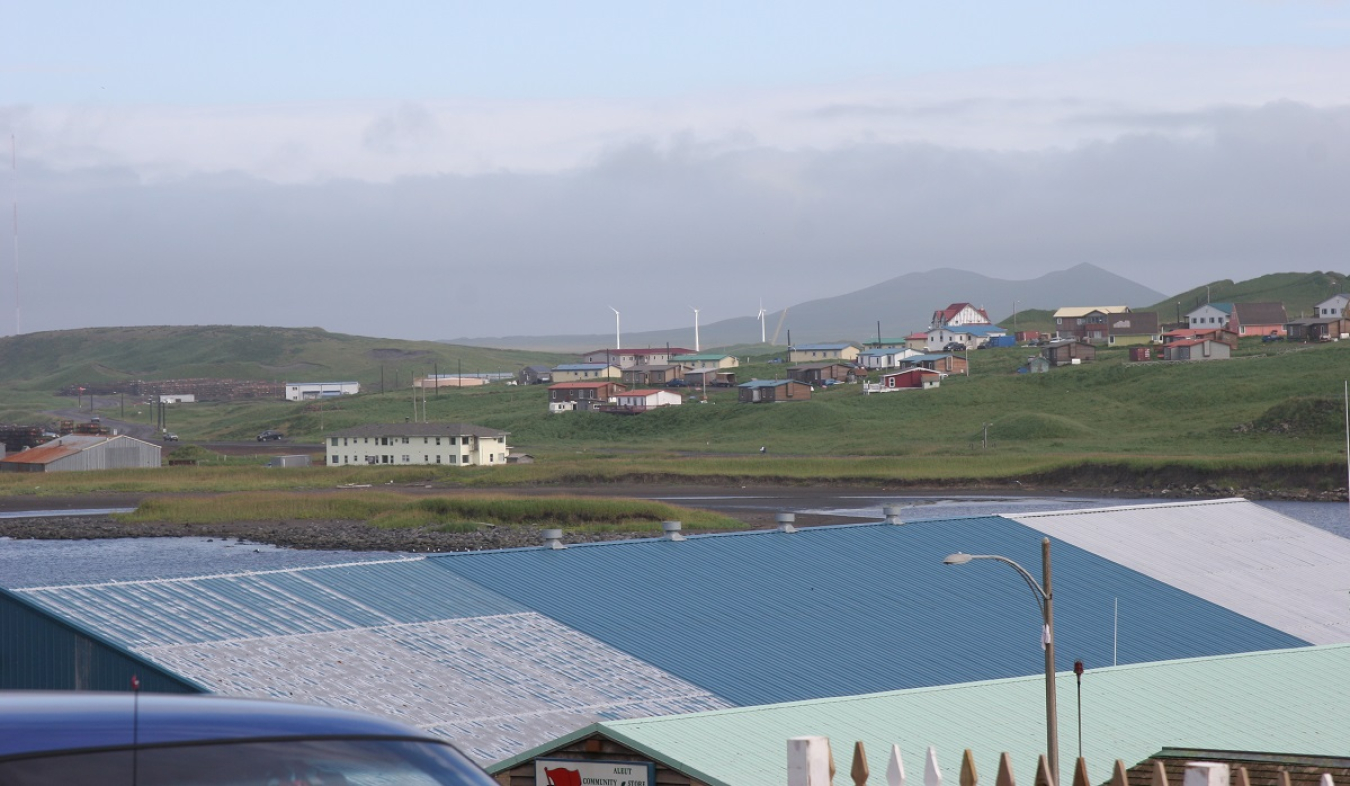A DOE-cofunded retrofit of a remote Alaskan airport facility will reduce electricity use by 54% while nearly doubling the contribution of wind power.
Office of Indian Energy Policy and Programs
September 13, 2017A DOE-cofunded retrofit of the remote Alaskan airport facility will reduce electricity use by 54% while nearly doubling the contribution of wind power.
Tanadgusix Corporation’s vision is to develop local renewable resources, primarily wind, with the goal to expand its application of microgrid technology to provide 80% of the energy required for electricity, heat, and ground transportation on the island from renewable resources by 2025. This project is an important step toward this ambitious goal…. Our past experience and ‘lessons learned’ have provided us with insights, operational strategies, and proven planning experience to execute projects successfully.
Tanadgusix Corporation (TDX), an Alaska Native village corporation selected in June to receive a half-million-dollar grant from the U.S. Department of Energy (DOE) Office of Indian Energy, has a long history of visionary leadership on the clean energy front. Now the village corporation is stepping it up.
The village corporation for St. Paul, an Aleut community on the southern tip of St. Paul Island in the Bering Sea, has invested more than $8 million in clean energy and energy efficiency systems at its facilities over nearly two decades. In the late 1990s, it designed and developed the first Native-owned and operated independent wind-diesel hybrid plant in Alaska. Installed in 2000 to offset diesel fuel consumption at TDX’s Petroleum Offshore Supply Support (POSS) Camp at the airport, the $3 million, half-megawatt plant was the largest of its kind in the state. In 2006, the village corporation installed two more wind turbines, located at the POSS Camp but interconnected to the municipal grid, to generate power for the city and revenue for TDX. The system is designed such that any excess wind energy is used to provide additional heating to the POSS Camp.
With its new project, a $1.7 million energy retrofit of the 80,000-square-foot POSS Camp complex, TDX aims to build on its past investments to maximize the impacts for its shareholders and the St. Paul community. To complete the project, TDX will invest more than $1.2 million in cash, donated services, and equipment to complement the $500,000 DOE grant. The planned retrofit represents the next major step toward TDX’s ambitious goal of developing local renewable resources to provide 80% of the island’s energy needs in the next decade.
Challenge

Photo from Tanadgusix Corporation
Located in the Bering Sea more than 200 miles north of Alaska’s Aleutian Island chain, St. Paul Island is remote, cold, and windy. Like many other Native communities in Alaska, St. Paul struggles with high energy costs and unpredictable energy supply, primarily because of the island’s remote location, lack of economies of scale, and inhospitable weather. Currently, imported fossil fuel provides 98% of the island’s energy needs, primarily for heating. This leaves St. Paul residents vulnerable to delayed or canceled fuel deliveries and fluctuating oil prices. According to the Alaska Energy Authority, 75% of the fossil fuel consumed by homes and businesses in remote Alaskan communities is used for heating. The proven wind resource on St. Paul Island presents an opportunity for TDX to contribute to a more sustainable energy future for St. Paul while reducing the energy use of its POSS Camp facility.
Due to design inefficiencies and high heating costs, the 80,000-square-foot POSS facility is vastly underutilized. The complex serves a number of commercial and tribal needs, but less than a third of the available space is currently heated and being used. To increase the facility’s potential by more than doubling its functional, climate-controlled space while lowering its overall operating costs, TDX set out to identify the most cost-effective options for increasing the building’s energy efficiency and improving its heating system. Encouraged by the success of its initial wind-diesel hybrid system, which currently provides 34% of the POSS facility’s electricity and heating needs, TDX also sought to increase the contribution of wind to further offset fossil fuel use and reduce facility operating costs.
Solution

Photo from Tanadgusix Corporation
In 2015, TDX conducted an energy audit to establish the POSS Camp’s baseline energy consumption and assess opportunities for reducing the facility’s energy use. Using the information gathered, TDX developed a plan for achieving its goals for the POSS Camp. In November 2016, TDX applied to the Office of Indian Energy’s Deployment of Energy Efficiency and Clean Energy on Indian Lands funding opportunity in an effort to offset the cost of the proposed energy retrofit and maximize the return on its investment.
Along with adding a second 900-kilowatt (kW) wind turbine to the facility’s stand-alone electrical system, TDX plans to install heat pumps and perform multiple energy efficiency measures and system improvements to decrease the facility’s electrical and thermal energy use. Planned electrical energy efficiency measures include lighting upgrades, wiring repairs, and replacement of aging electrical equipment, while planned measures to tighten the building’s thermal envelope include air sealing, insulation improvements, and new door/seal hardware.
Prior to undertaking this proposed project, TDX will install a new insulated roof to the entire facility at a cost in excess of $1.1 million. Before the proposed retrofit gets under way, TDX also plans to refurbish the existing heating systems in the three hangar high bay areas. This preliminary work will create a ducting system for wind-produced heat and provide a backup heating system when wind is not available. For the major energy retrofit, the TDX engineering staff will install the wind turbine and perform the necessary system integration measures.
Tanadgusix Corporation’s vision is to develop local renewable resources to provide 80% of all the energy used on island in the next decade. This project is an important step toward this ambitious goal. Our past experience and ‘lessons learned’ have provided us with insights, operational strategies, and proven planning experience to execute projects successfully.
Benefits

Photo from Tanadgusix Corporation
In addition to cutting the electricity use of the entire POSS Camp facility by approximately 54% and reducing the thermal load of the existing heated space by 23%, the proposed project will nearly double the contribution of wind power, from 34% to 67%, through the addition of a 900-kW wind turbine. These combined actions will reduce diesel fuel purchases by an estimated $239,000 per year and result in a net annual savings of nearly $200,000. Other anticipated project benefits include:
- Increased revenue from leasing the additional 28,000 square feet of climate-controlled space
- Environmental benefits accrued from reducing the facility’s carbon emissions by 560 tons per year
- Training, employment, and educational opportunities for community members.
By moving TDX one step closer to its goal of developing local renewable resources to provide 80% of the energy used on St. Paul Island in the next decade, the project will strengthen the village corporation’s reputation for leadership in clean energy development and environmental stewardship in Alaska. TDX anticipates that this will positively impact tourism and enhance business opportunities, while advancing its long-term vision for the community.
Along with the immediate energy- and cost-saving benefits, the project will also create opportunities to train our technical personnel on energy efficiency retrofits, which they can apply to homes and businesses on the island. Having local trained technicians with the knowledge and capacity to initiate and perform this kind of work serves our long-term strategy to engage and educate the community about the values of energy efficiency and renewable energy programs, which is foundational to our vision of a sustainable, clean energy future for St. Paul Island.

